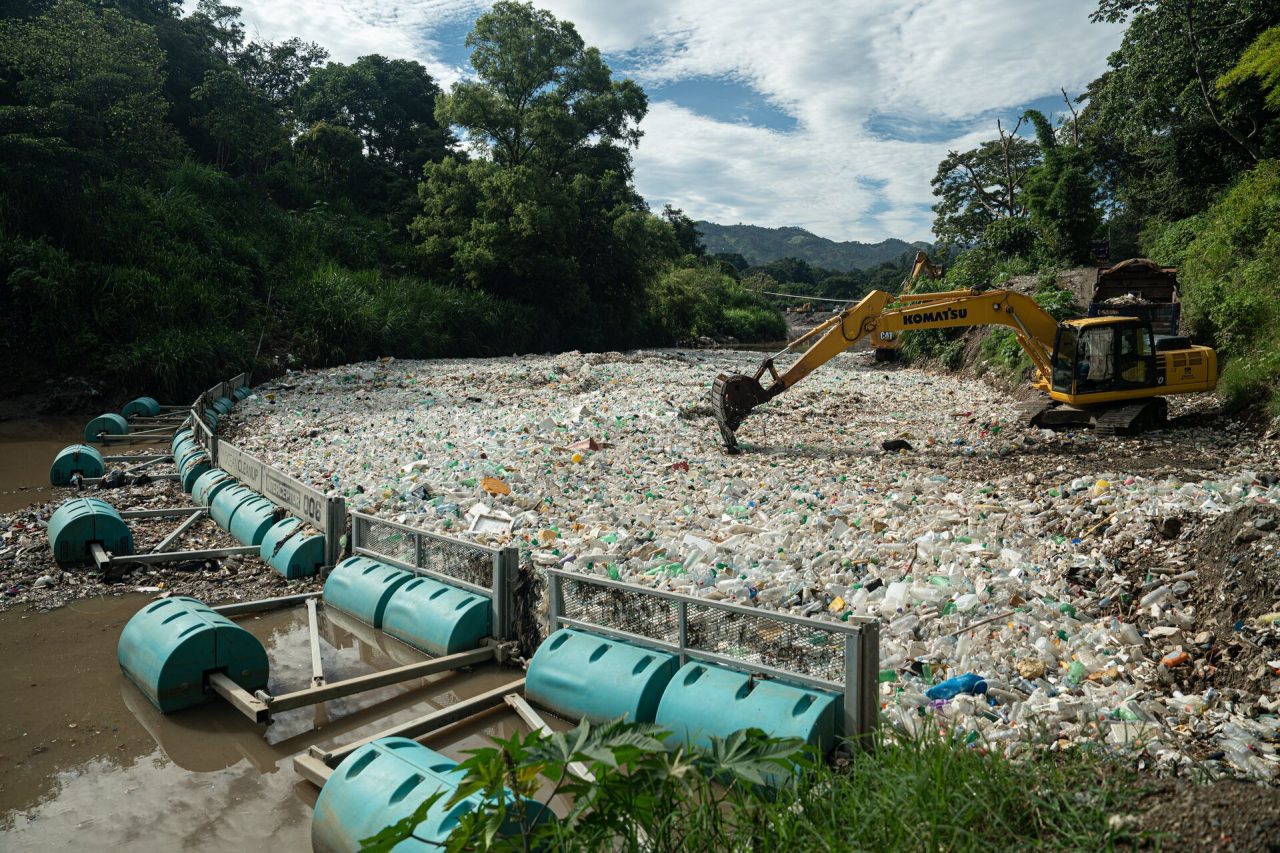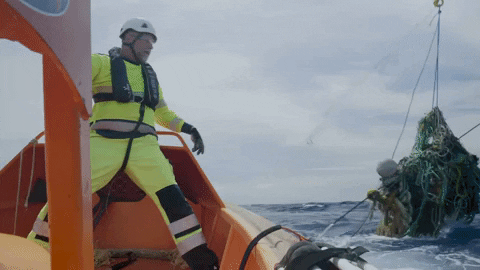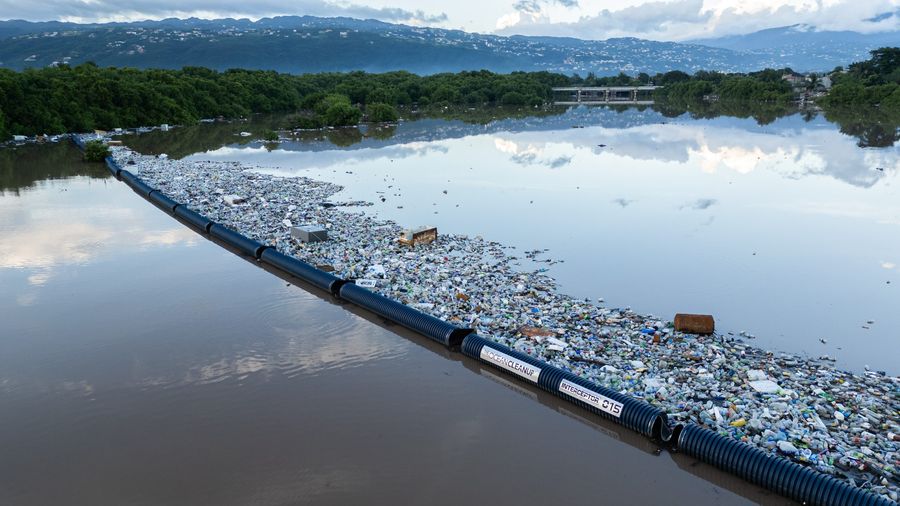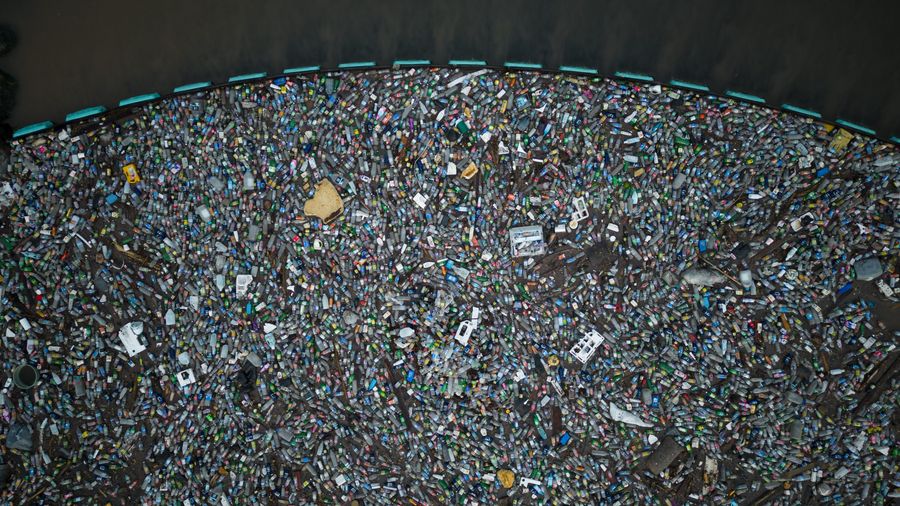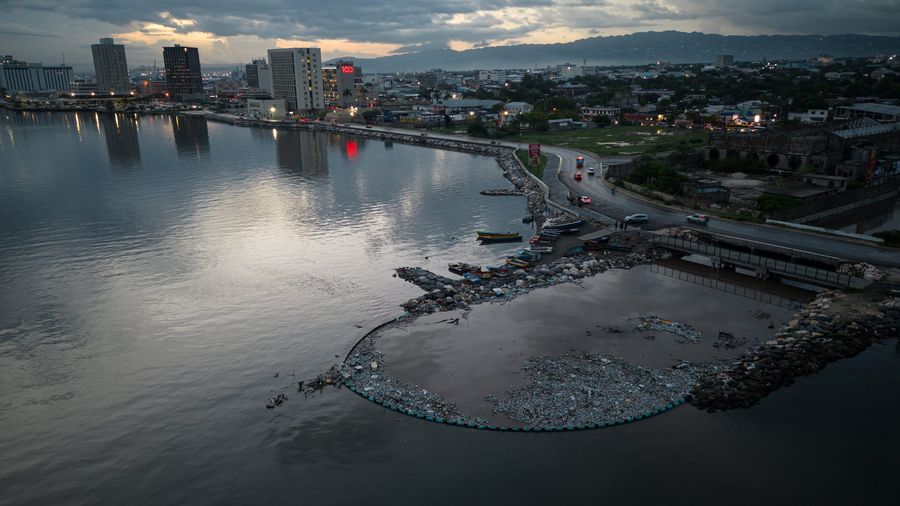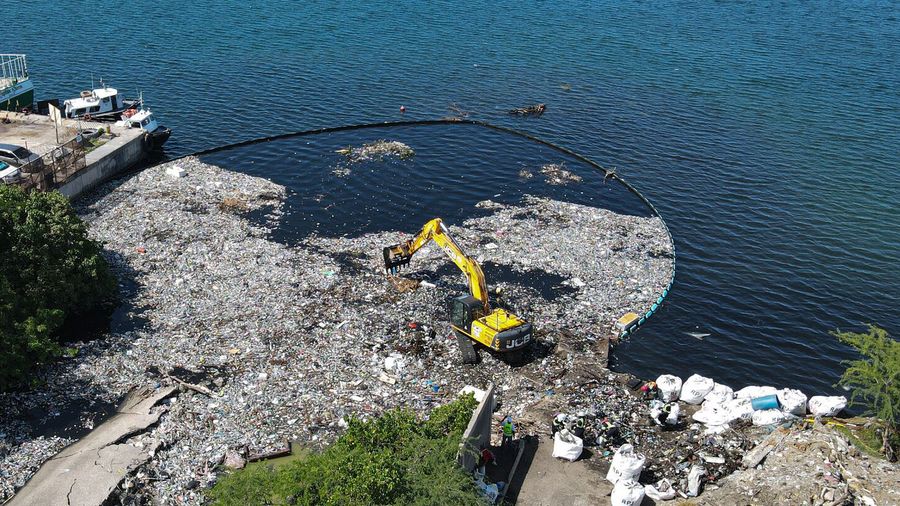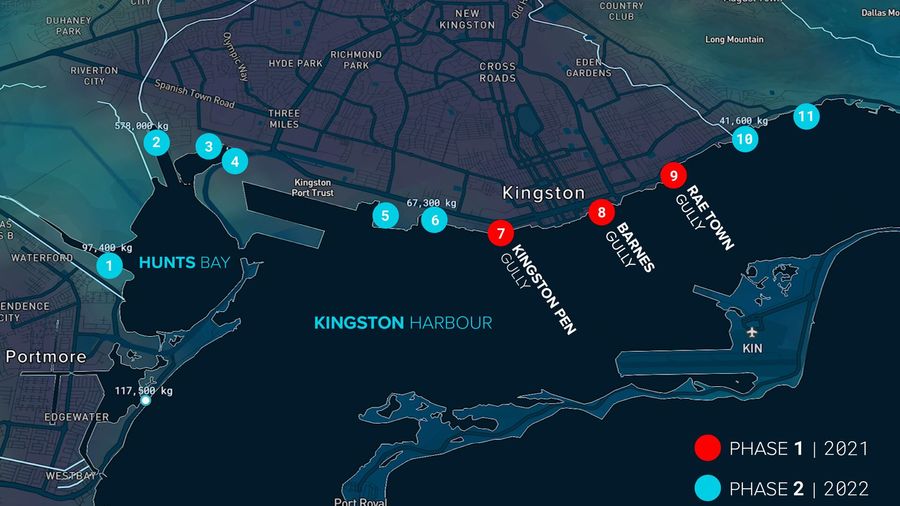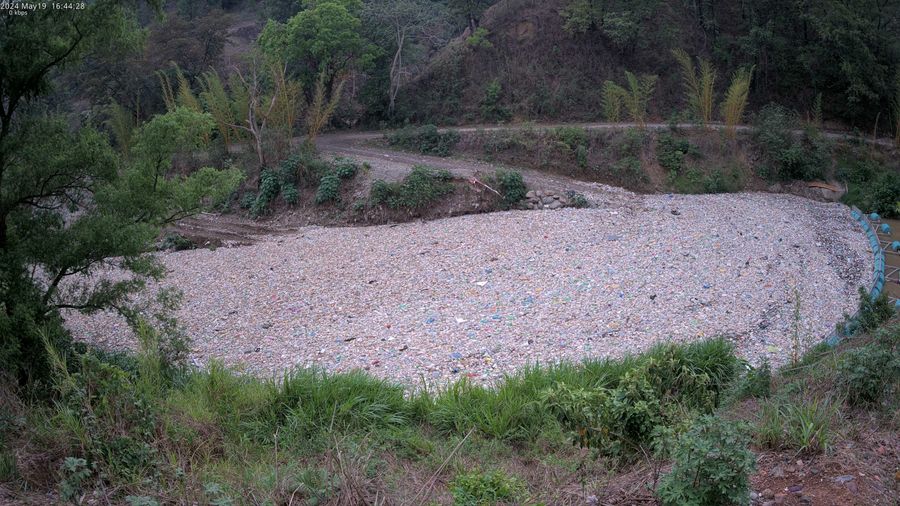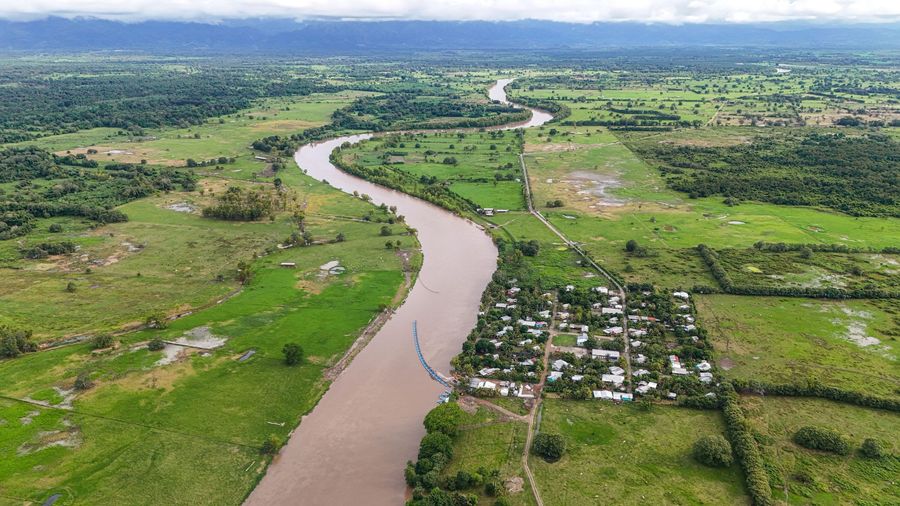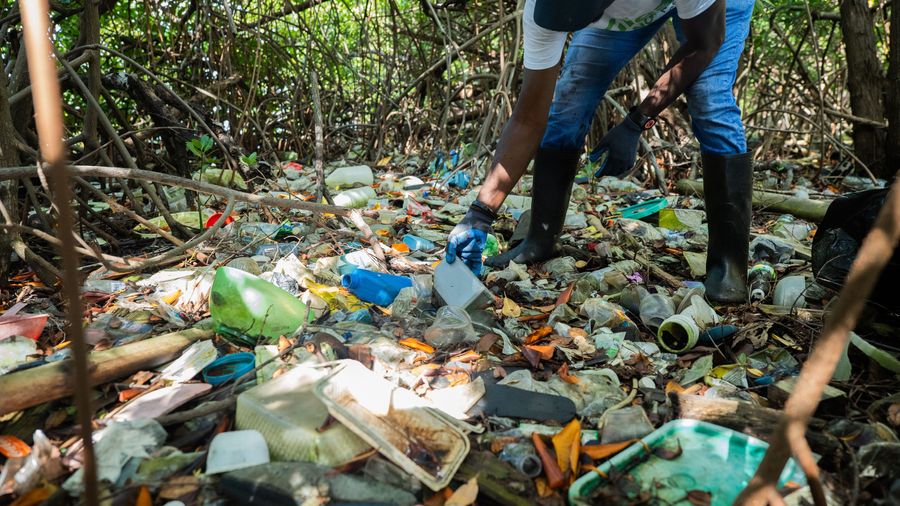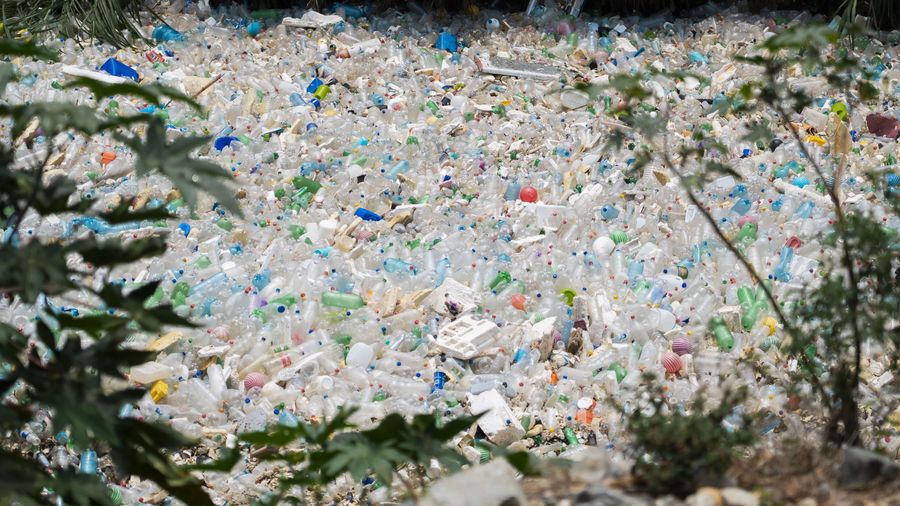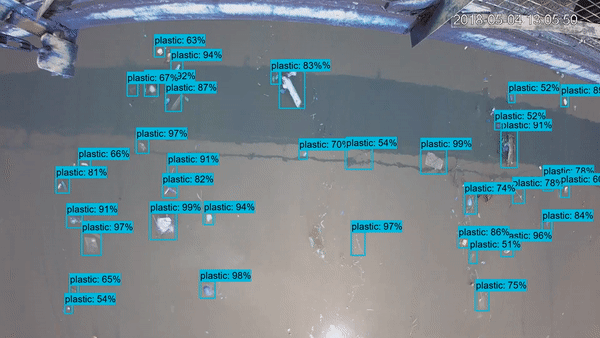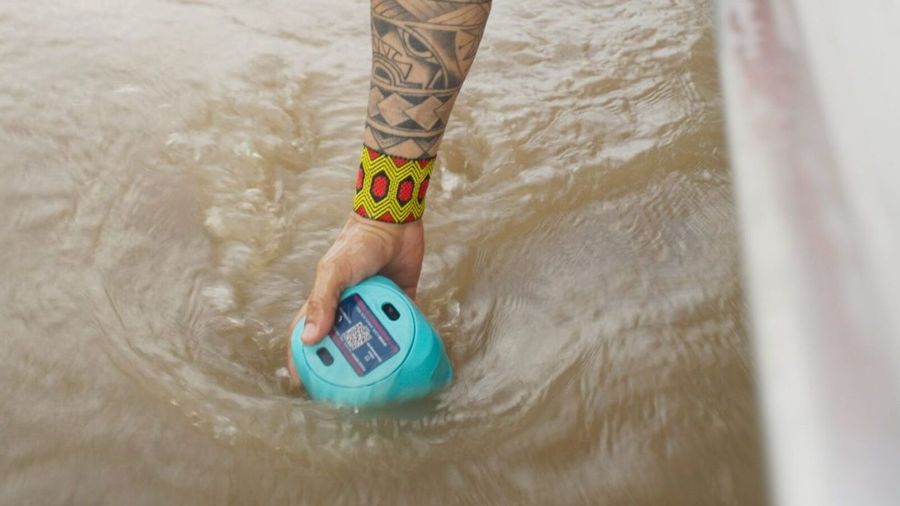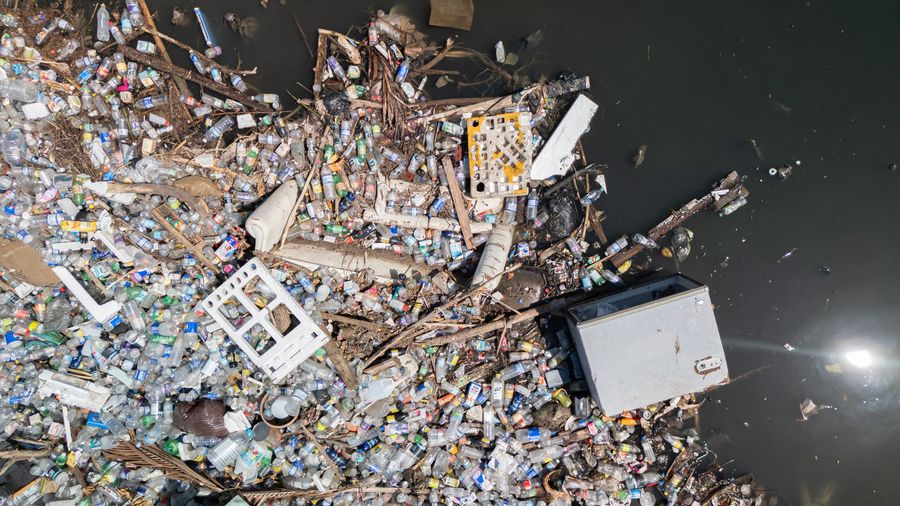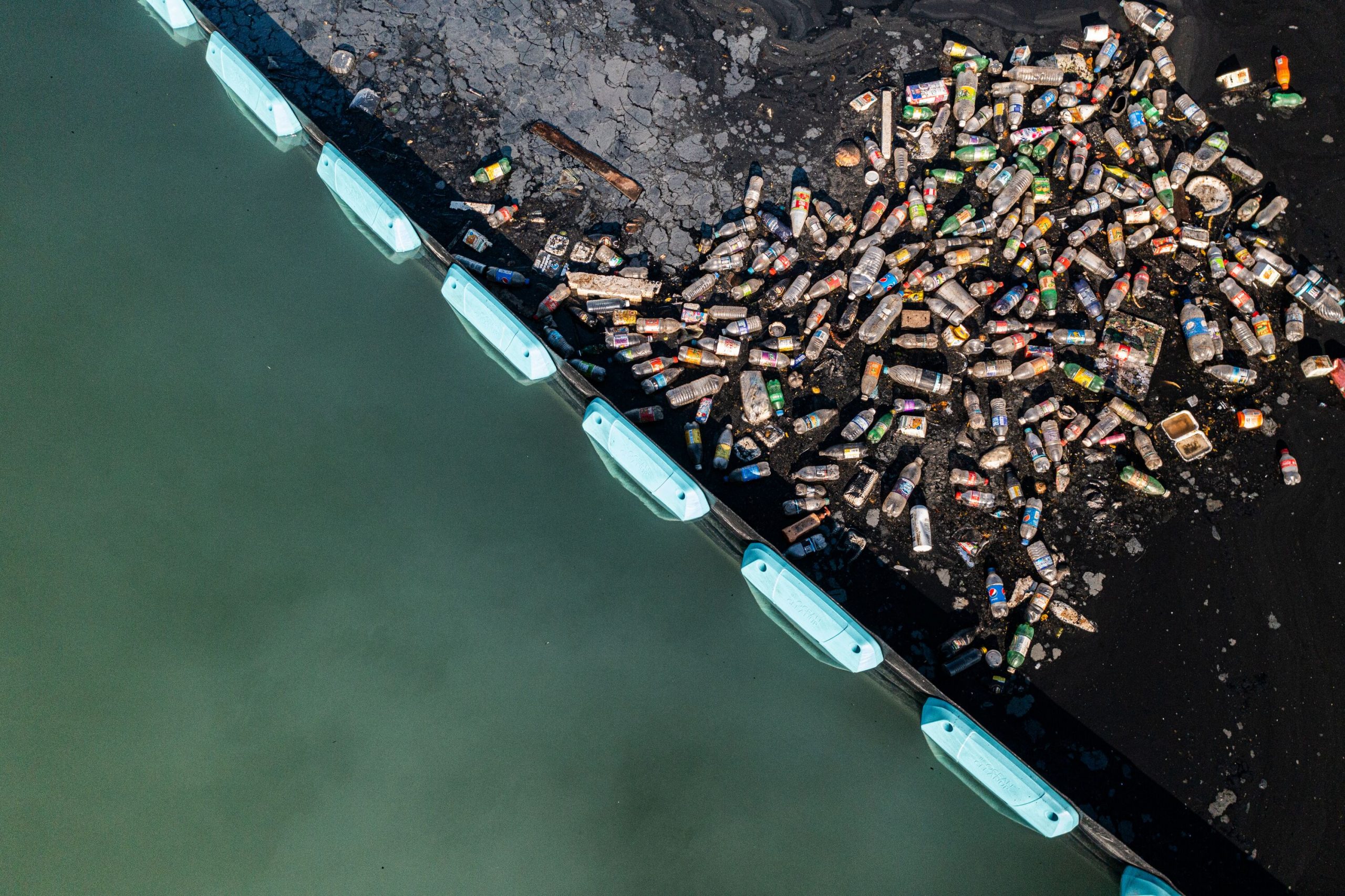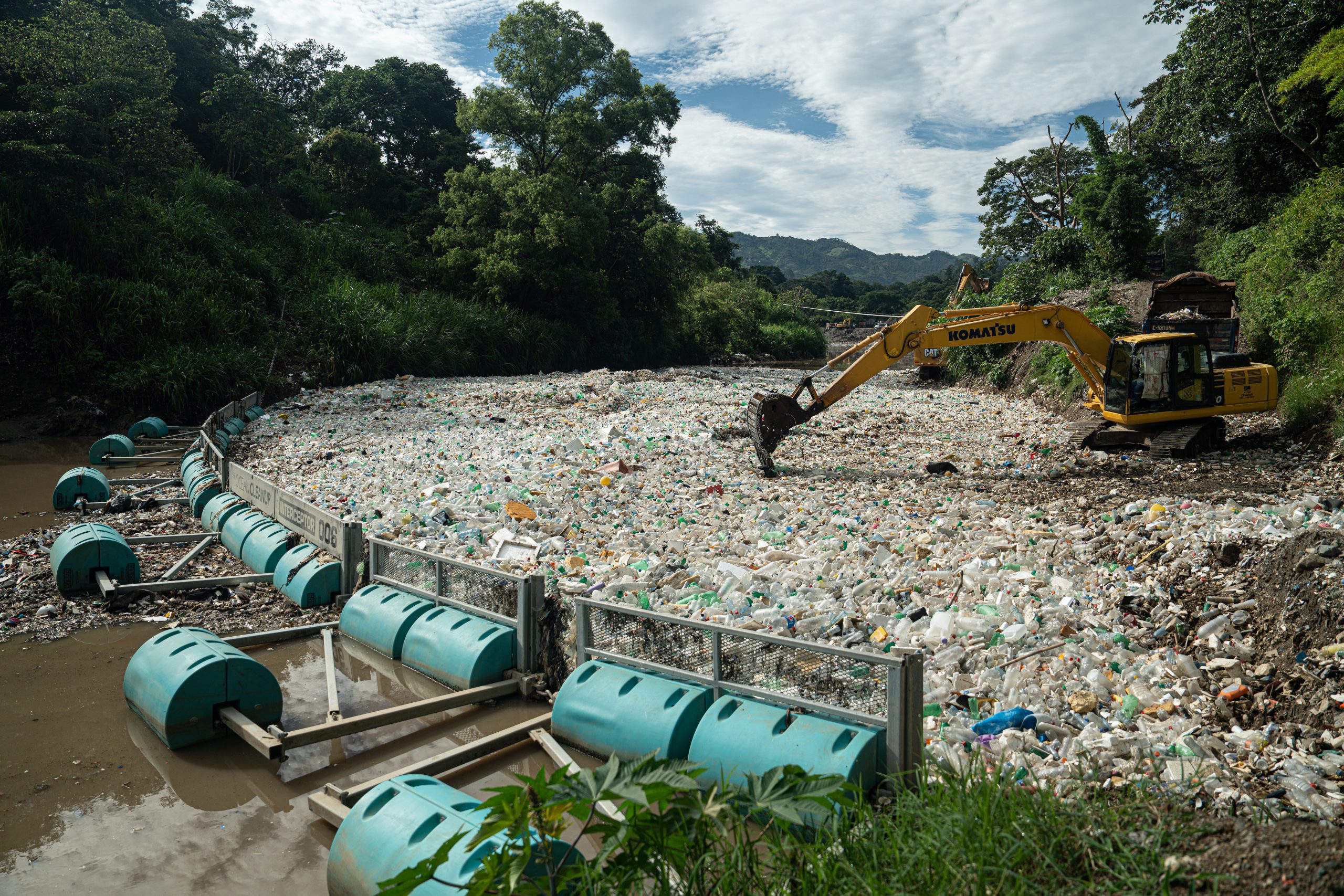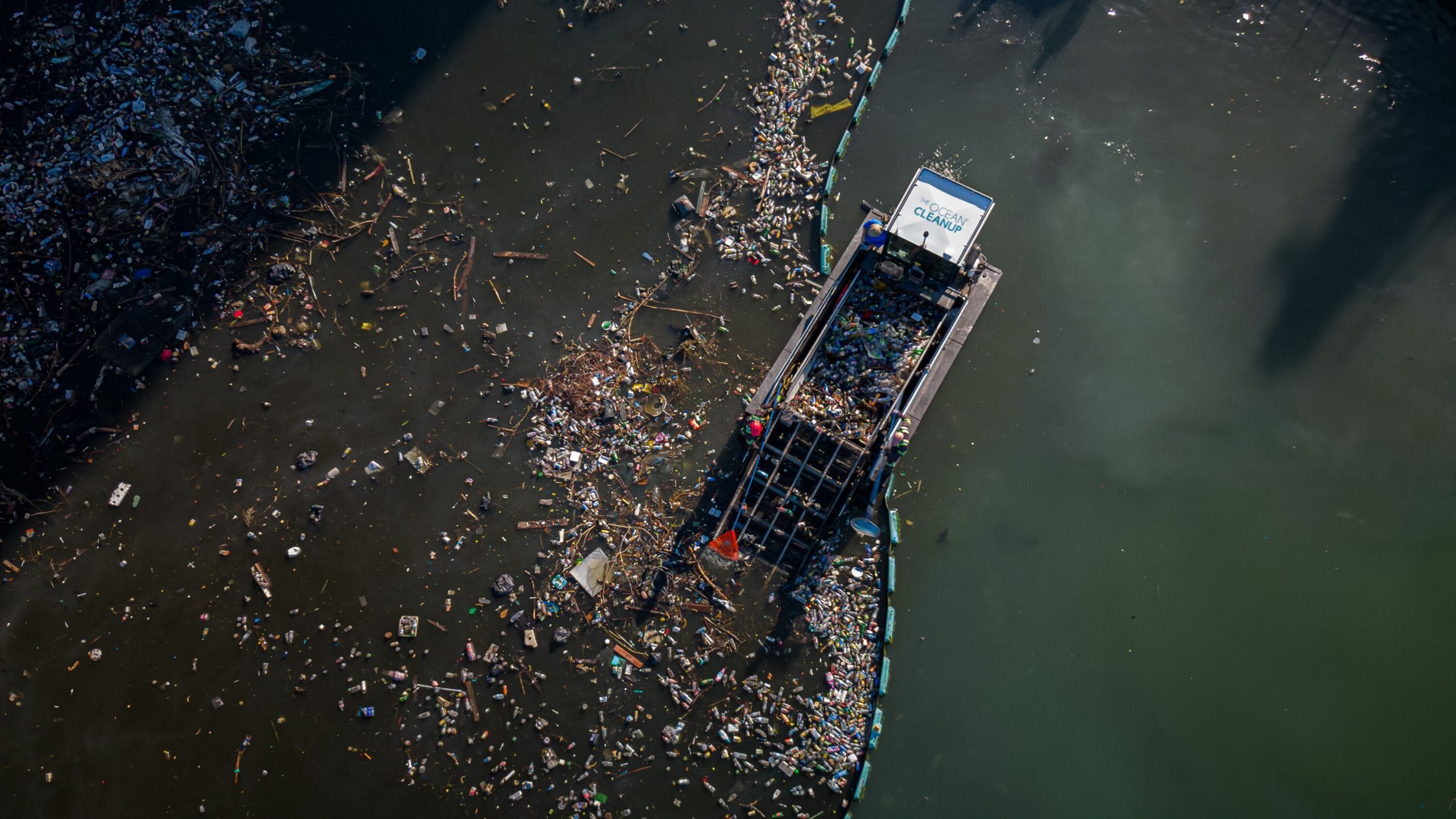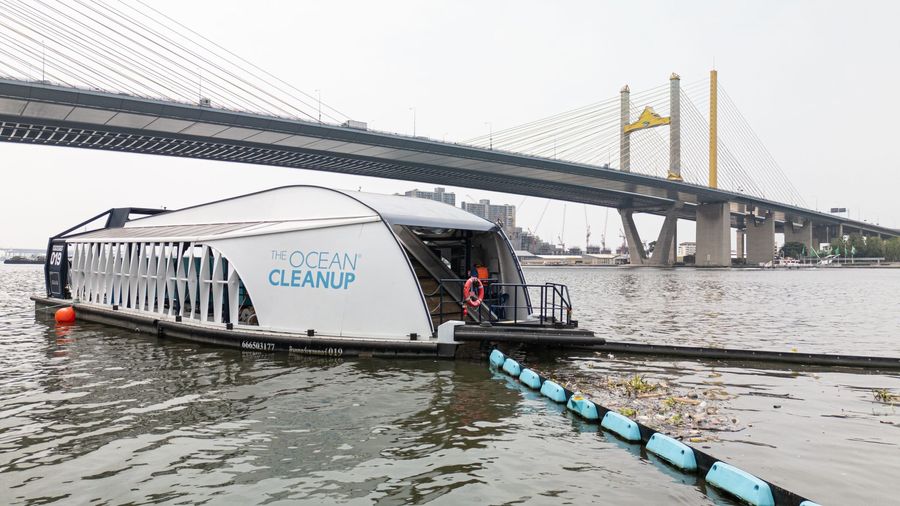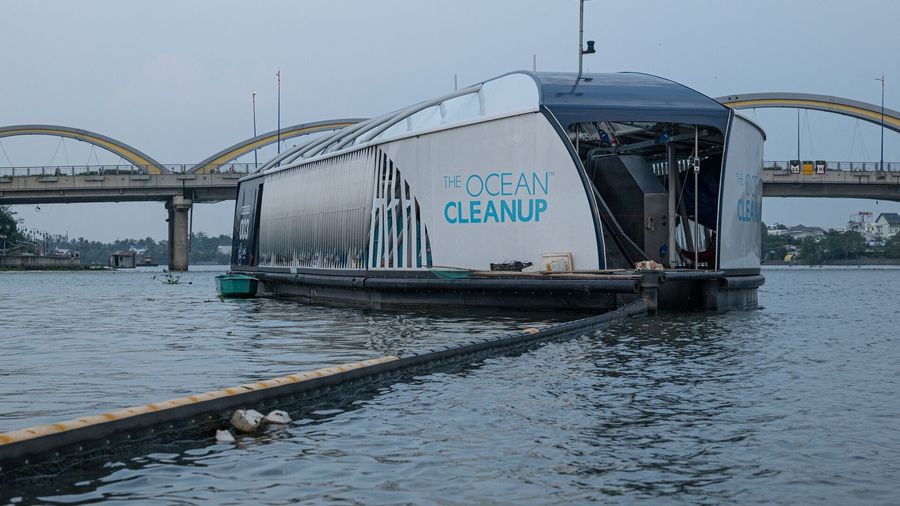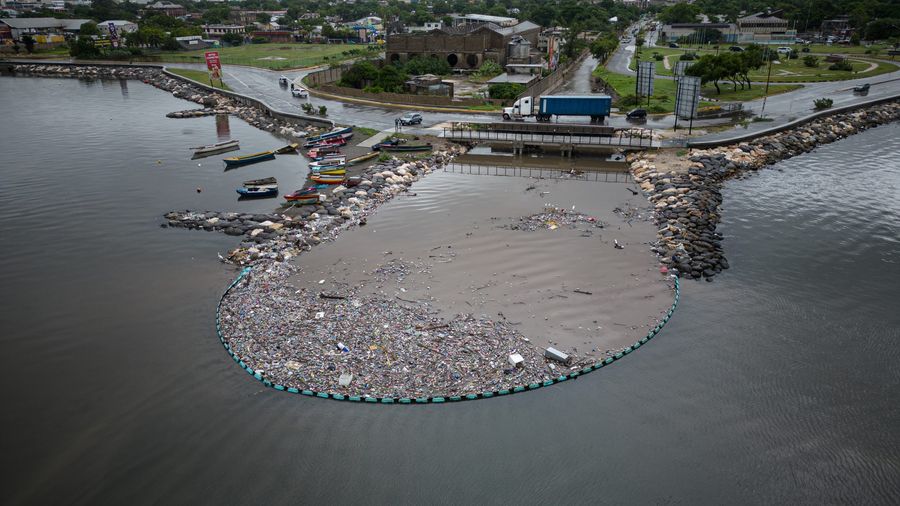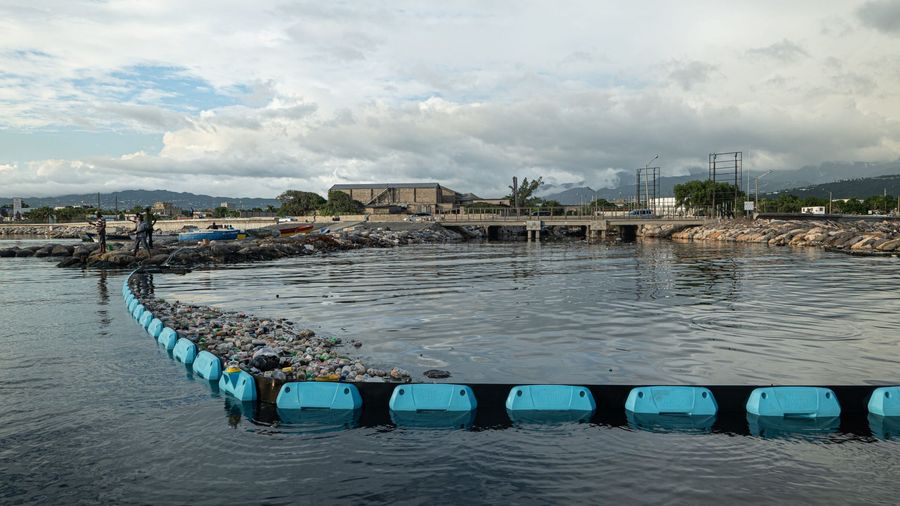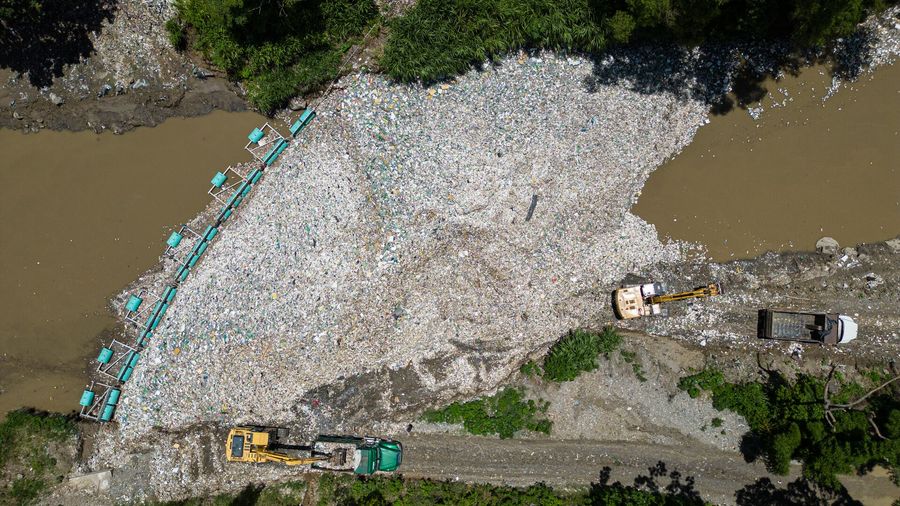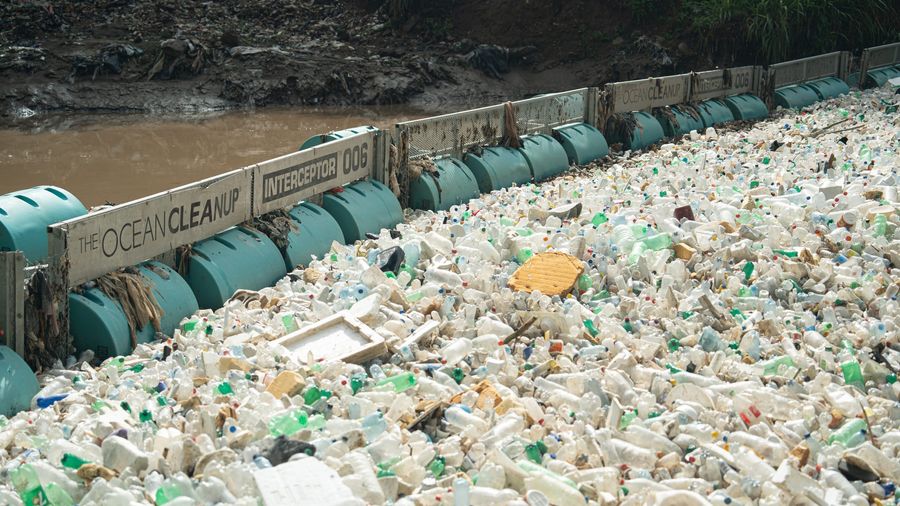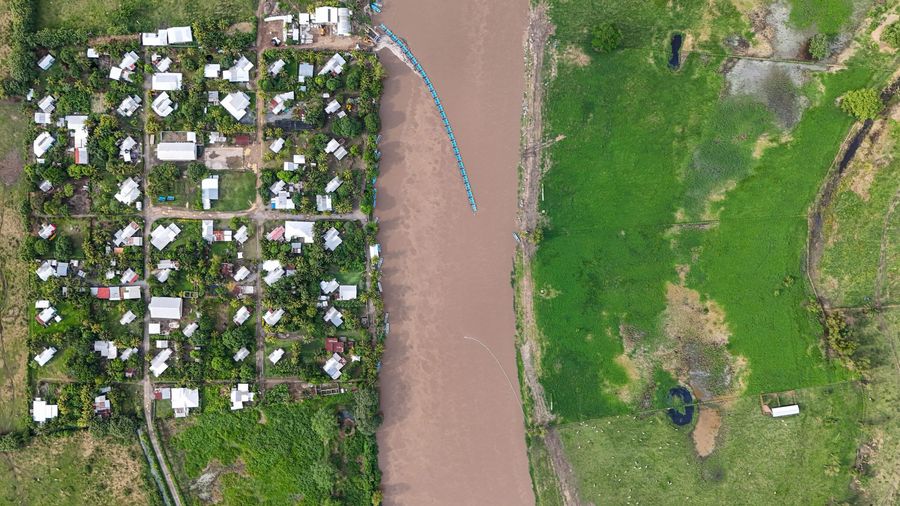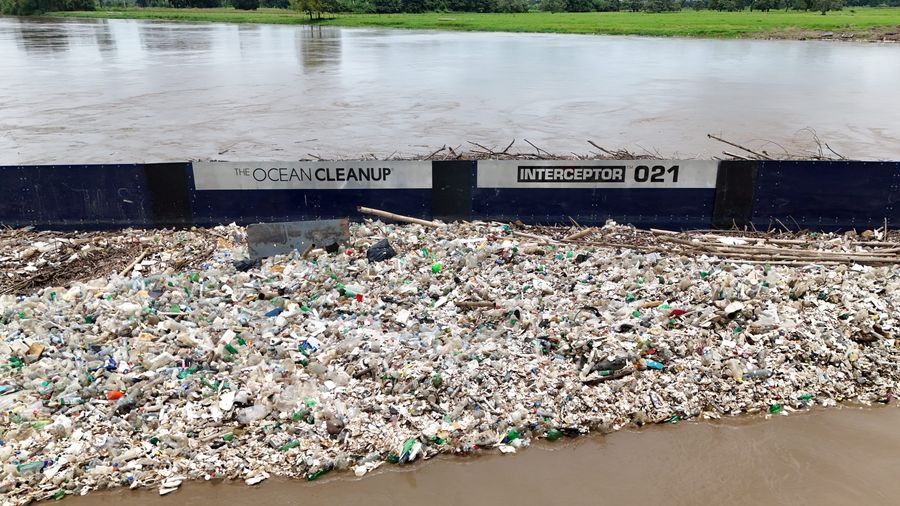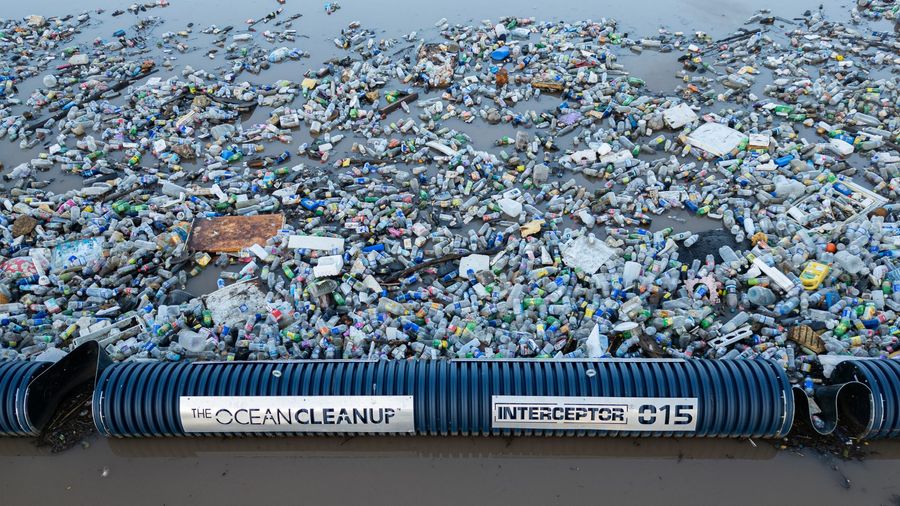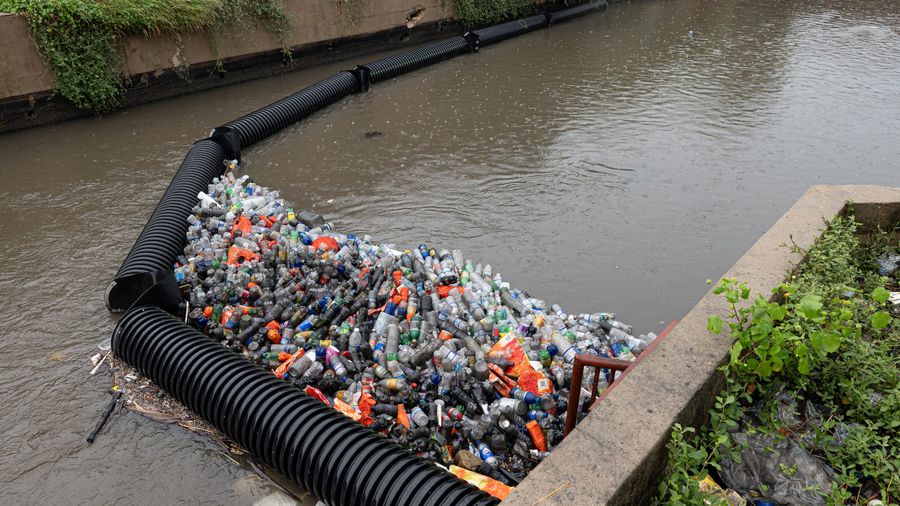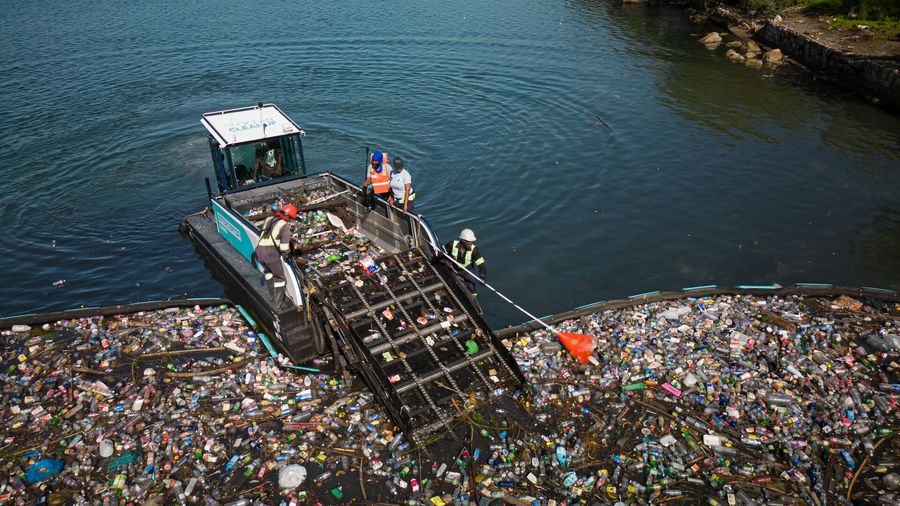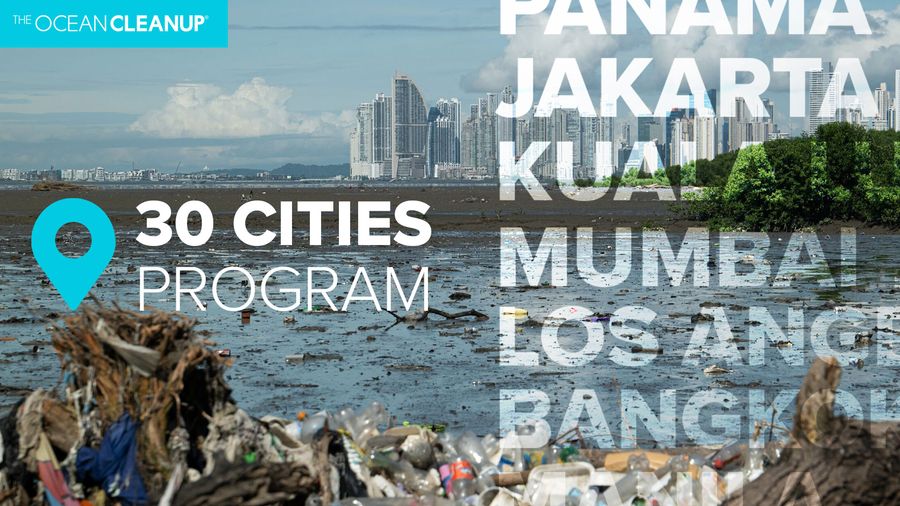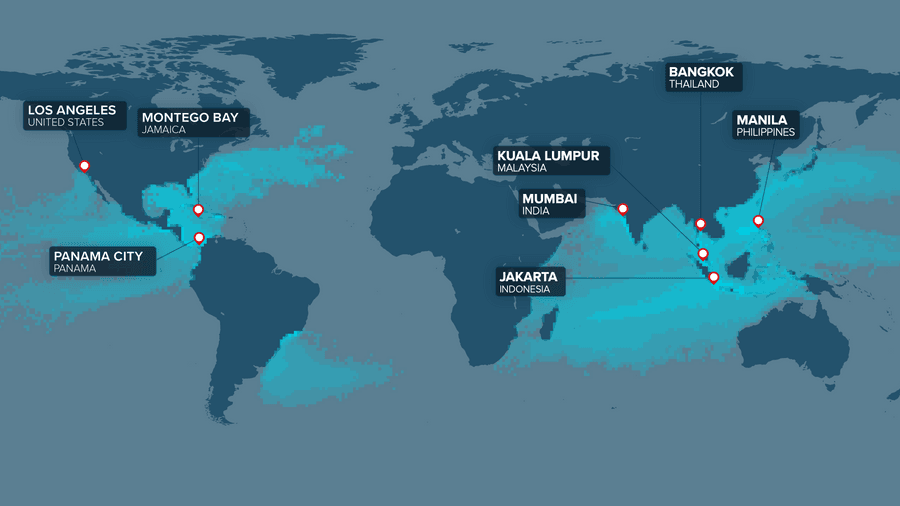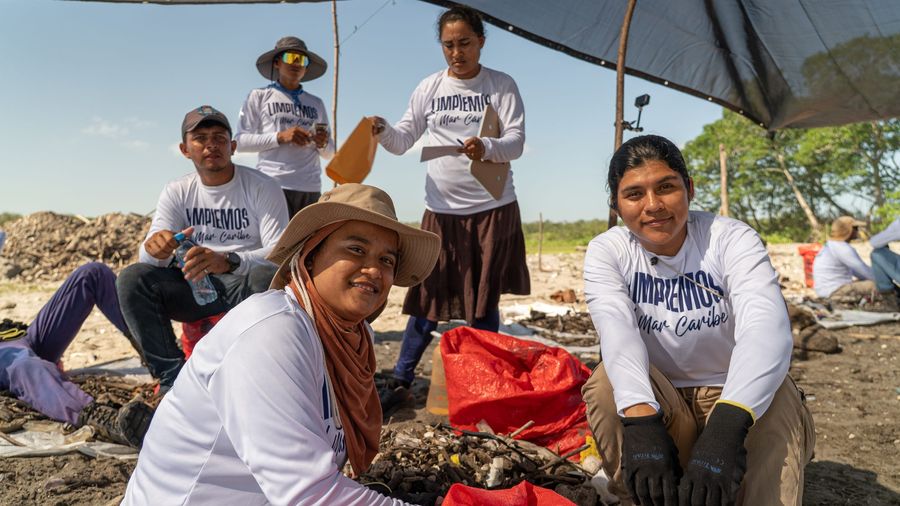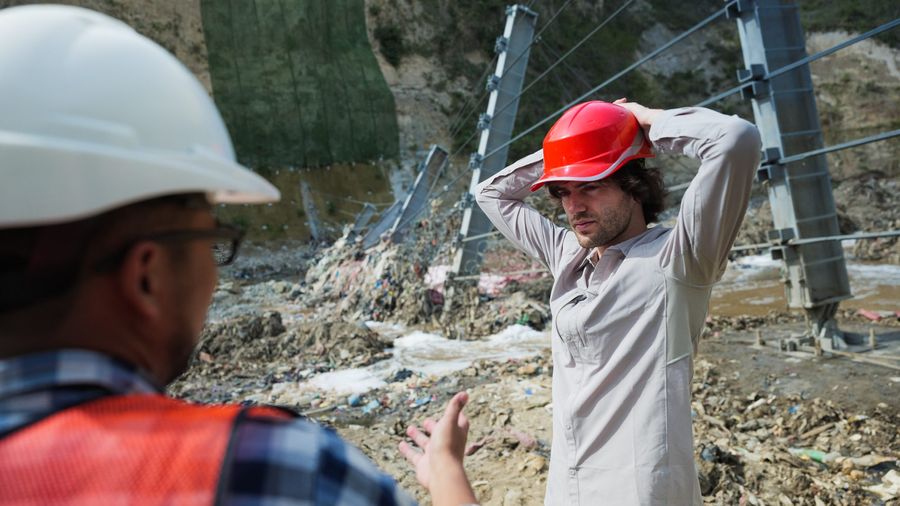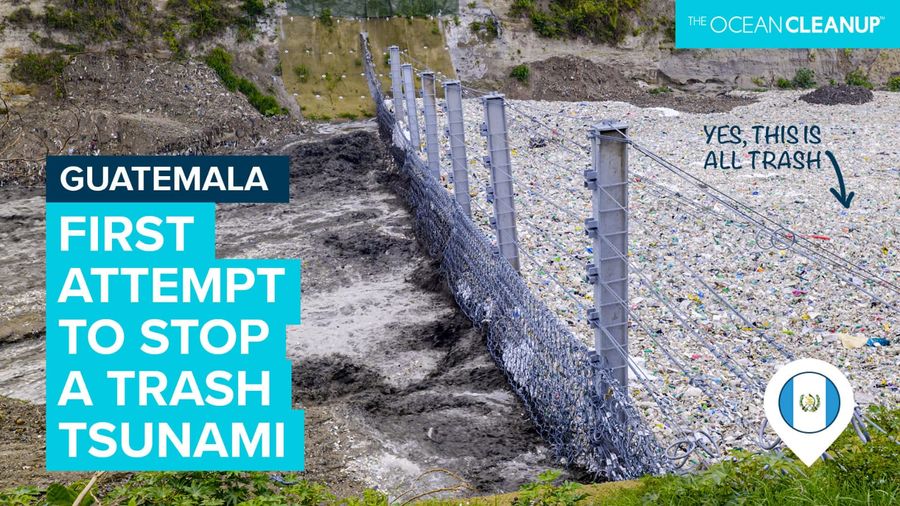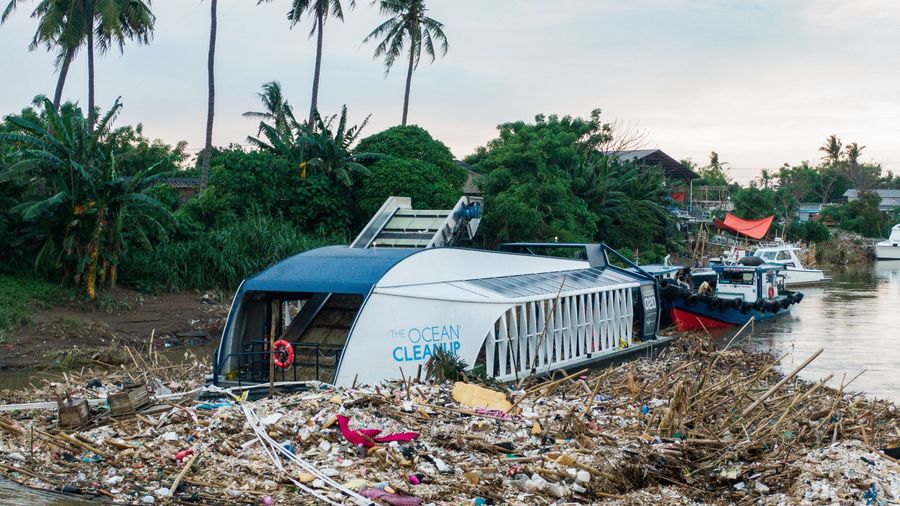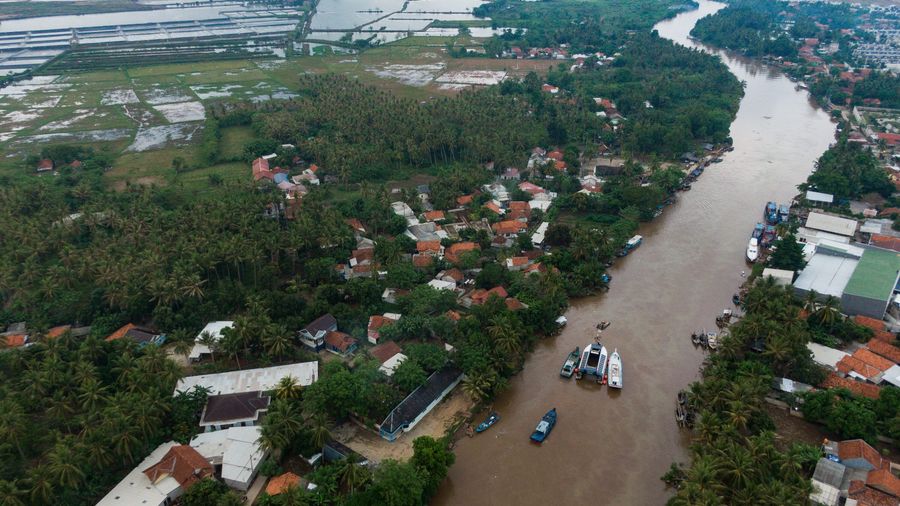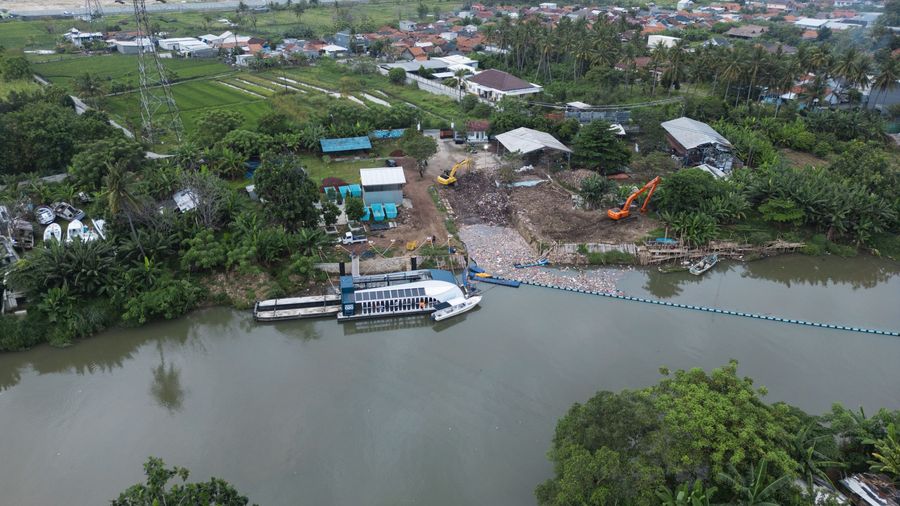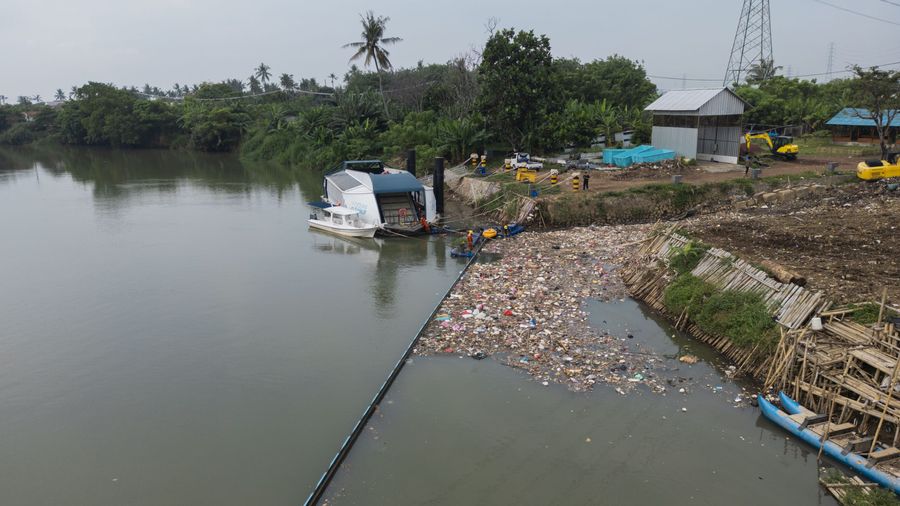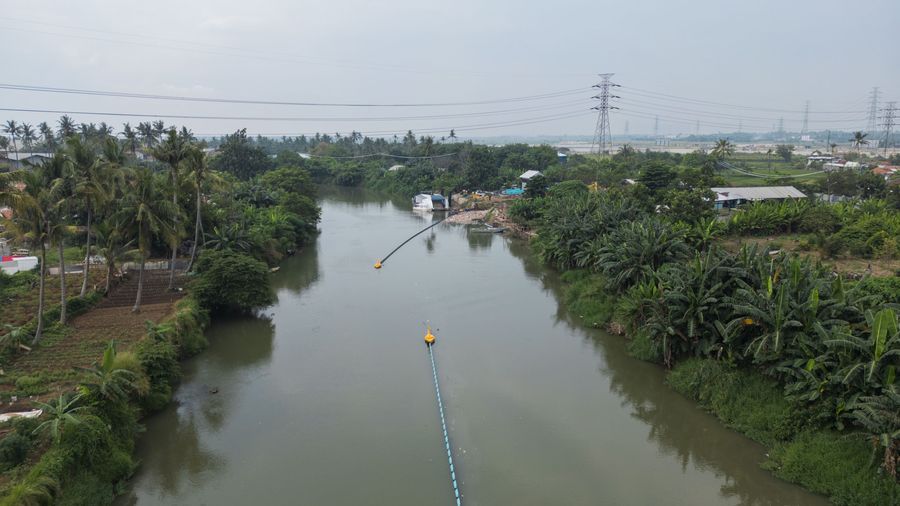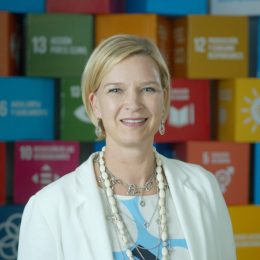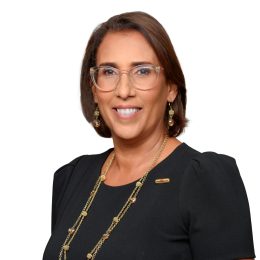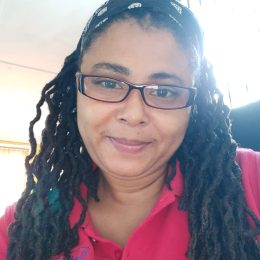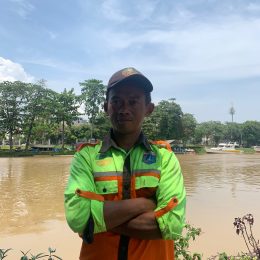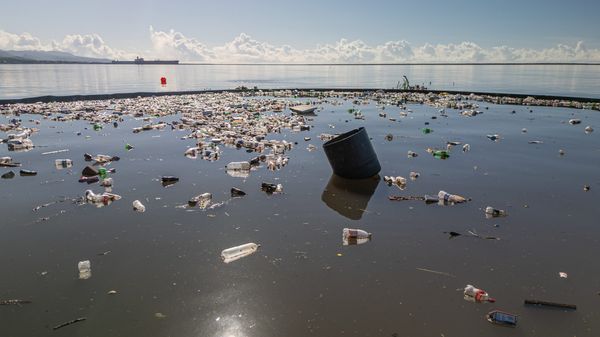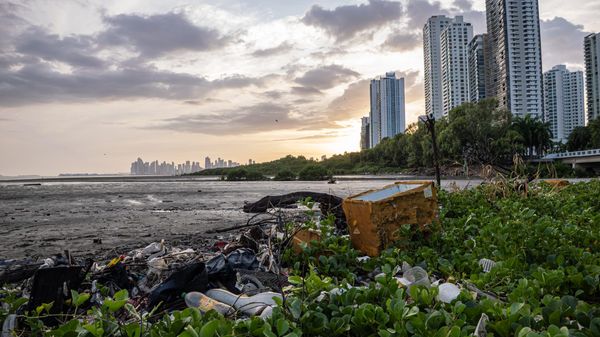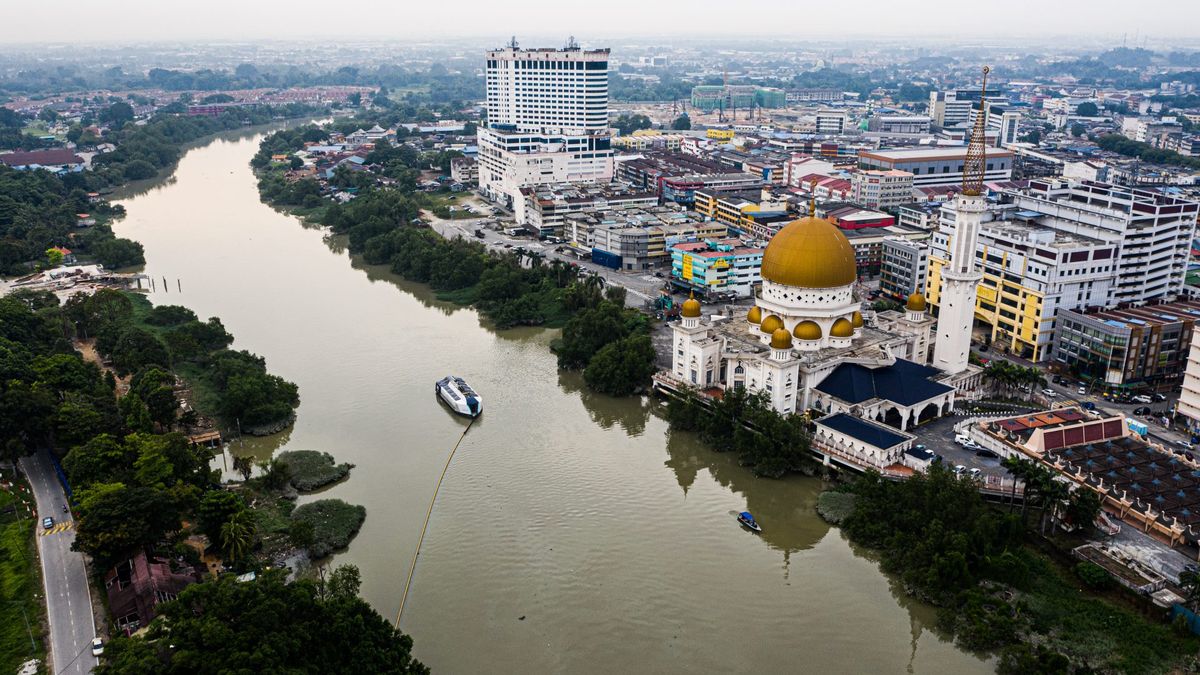
Intercepting trash in rivers
80% of river plastic
stems from
1000 rivers
River pollution affects the oceans as well as coastal environments, impacting on biodiversity, ecosystems, and the health of local communities. According to our research, just 1000 of the three million rivers found around the world are responsible for 80% of riverine pollution.
We are intercepting river plastic
To rid the oceans of plastic, we need to not only clean up what is already out there but also stop new plastic from entering the ocean. Working together with government leaders, individuals, and private organizations, our goal is to tackle the most polluting rivers globally.
In addition to our work in the Great Pacific Garbage Patch, we deploy river-based Interceptor solutions which fit into local waste management infrastructures. Our project in Kingston Harbour, Jamaica, was the first to feature multiple Interceptors in one city and laid the groundwork for a more efficient and comprehensive approach to intercept plastic before it reaches the ocean: the 30 Cities Program.
It is estimated that marine ecosystems provide benefits of up to $50 trillion per year through their ecosystem services (Constanza et al., 2014). Plastic pollution is estimated to reduce the value of these ecosystem services by $500 to $2500 billion per year (Beaumont et al., 2019). Intercepting plastic in rivers is much more cost-effective than dealing with the consequences downstream.
Data-driven action
At The Ocean Cleanup we are using smart technologies and innovative research to identify the best solution for each city’s waterways and help local communities reclaim their environment. We undertake comprehensive data-gathering efforts which span the course of the rivers we deploy in.
To do this we use a range of technologies including drones, GPS trackers, in-house developed remote sensing cameras, and timelapse surveys which provide a wealth of information about the river, its dynamics, and how plastic pollution interacts with it. This data informs the type of approach we must take, which solution to use, and where our Interceptors need to be deployed for maximum impact.
Once deployed, our research focuses on monitoring not just the performance of the Interceptor, but the composition of the trash we recover and what it can tell us about pollution sources. By sorting and analyzing the trash, we can identify what waste is entering the waterway, the pathways it takes before we intercept it, and what actions we can take alongside local partners to further reduce plastic pollution at scale.
Interceptor Solutions
No two rivers are the same. Factors like river width, depth, flow speed, debris composition, seasonality, and tides all have a major influence on the success of a river intervention. To tackle different types of scenarios, we have a family of technology solutions to choose from, ranging from high tech to low tech. Besides the ones listed below, we investigate the most suitable and effective ways to intercept plastic in other rivers on a case-by-case evaluation, and more solutions will be added to our portfolio.
Over 40 million kg of trash intercepted
We currently have 20 Interceptors deployed in 9 countries. Keep track of upcoming and deployed Interceptor Solutions on our dashboard.
30 Cities Program
Our 30 Cities Program shifts the attention from single rivers to entire urban areas with multiple polluted waterways. This program is expected to reduce the amount of plastic flowing into the ocean from rivers globally by up to a third and provide an opportunity for local communities, whose health and livelihoods are impacted by plastic pollution, to reclaim their environment.
Alongside intercepting new plastic, the 30 Cities Program also removes debris from nearby coasts, mangroves, and coral reefs through data-driven coastal sweeps. This enables us to achieve long-term impact, which includes the restoration of fish nursery habitats, boosting coastal tourism, and strengthening natural storm surge defenses.
To guarantee the lasting impact of the program, we work closely with local authorities and organizations to develop pathways for future improvements to waste management infrastructure, create local jobs, raise awareness, and other capacity-building activities.
As part of the 30 Cities Program, The Ocean Cleanup is doing city-scale deployments in Mumbai (India), Jakarta (Indonesia), Montego Bay (Jamaica), Kuala Lumpur (Malaysia), Panama City (Panama), Manila (Philippines), Bangkok (Thailand), and Los Angeles (United States). New cities will be announced as preparations for deployment are confirmed.
Coastal Sweeps
A large amount of the plastic waste that enters the ocean from land finds itself trapped in near-shore or coastal ecosystems such as beaches, gullies, mangroves, seagrass meadows, and coral reefs. These environments, apart from being critical biodiversity habitats, are directly tied to the health and livelihoods of local communities.
Coastal sweeps are data-driven cleanups of polluted areas downstream of our Interceptor projects. Carried out alongside the local community, these coastal sweeps are intended to record and remove as much legacy plastic and other waste from the area as possible.
These coastal sweeps are a major step towards restoring the local environment on our 30-cities program as they address the legacy trash which has already been accumulating on shores. They re-establish fish nursery habitats, boost coastal tourism, and strengthen natural storm surge defenses.
Key Learning Events
Las Vacas, Guatemala
Rivers are complex systems to work within. Despite the thorough preparation and research that goes into site selection and the installation of our river solutions, there have been unscheduled learning opportunities that have helped further our understanding of the dynamics at play within a natural environment.
Interceptor 006, our first Trashfence design, was built to handle Guatemala’s rainy season and the large amounts of trash which it washed into the Las Vacas river. However, 006 was confronted by a much larger accumulation of trash than expected. Despite successful interception it, was unable to contain the sheer volume of trash carried by the river, and part of the fence collapsed.
Following rapid repairs and upgrades, 006 has been successfully stopping these trash tsunamis from progressing further downstream and into the Gulf of Honduras.
Cisadane, Indonesia
In similar circumstances, Interceptor 020 in Indonesia’s Cisadane river was affected by severe storms, with extreme rainfall leading to more debris than usual flowing through the river. Designed to deal with the challenging monsoon conditions in Indonesia, the intensity of the storm pushed 020 to its limits.
This moment highlighted to us, and our local partners, the need to improve interception and processing capacities to handle increasingly frequent severe weather events. To better support 020, new barriers were installed to increase river coverage to 100%, and a direct-to-shore waste processing strategy was implemented to ensure less buildup of debris and trash.
Together we can tackle plastic in the 1000 most polluting rivers
At The Ocean Cleanup, we see ourselves as the architects of river projects to stop the inflow of plastic into the oceans. We bring the knowledge (where and how to intercept riverine plastic), provide solutions (e.g. our Interceptors), and use an extensive network to raise awareness, helping to attract funding and financing.
Given the scale and the urgency of the issue, we depend on partners who, by working closely together, can help us in reaching our goal of tackling plastic in the 1000 most polluting rivers.
-
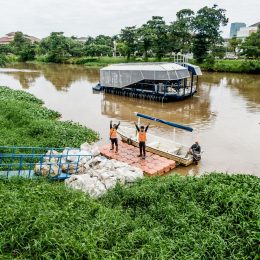
Execute
Operators
Our local partners operate the Interceptors to extract the waste from the river and bring this on shore. They work together with responsible waste handlers to sort debris and recycle plastic where possible. -
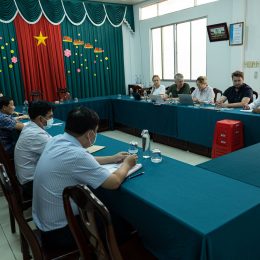
Initiate
Governments and river owners
Operators need support from (local) governments, who can provide the necessary permits to operate in rivers. Collection fees from governments and cities help safeguard continuity in waste extraction by the operators. -
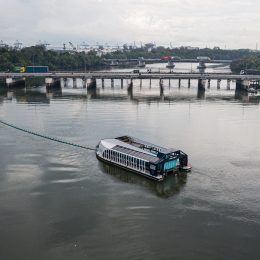
Accelerate
Funders and sponsors
Funders, sponsors, and investors make these river cleanups possible and accelerate the deployment of Interceptors. With your help, we can build consortia to clean rivers where it is most necessary.
A word from our Interceptor partners
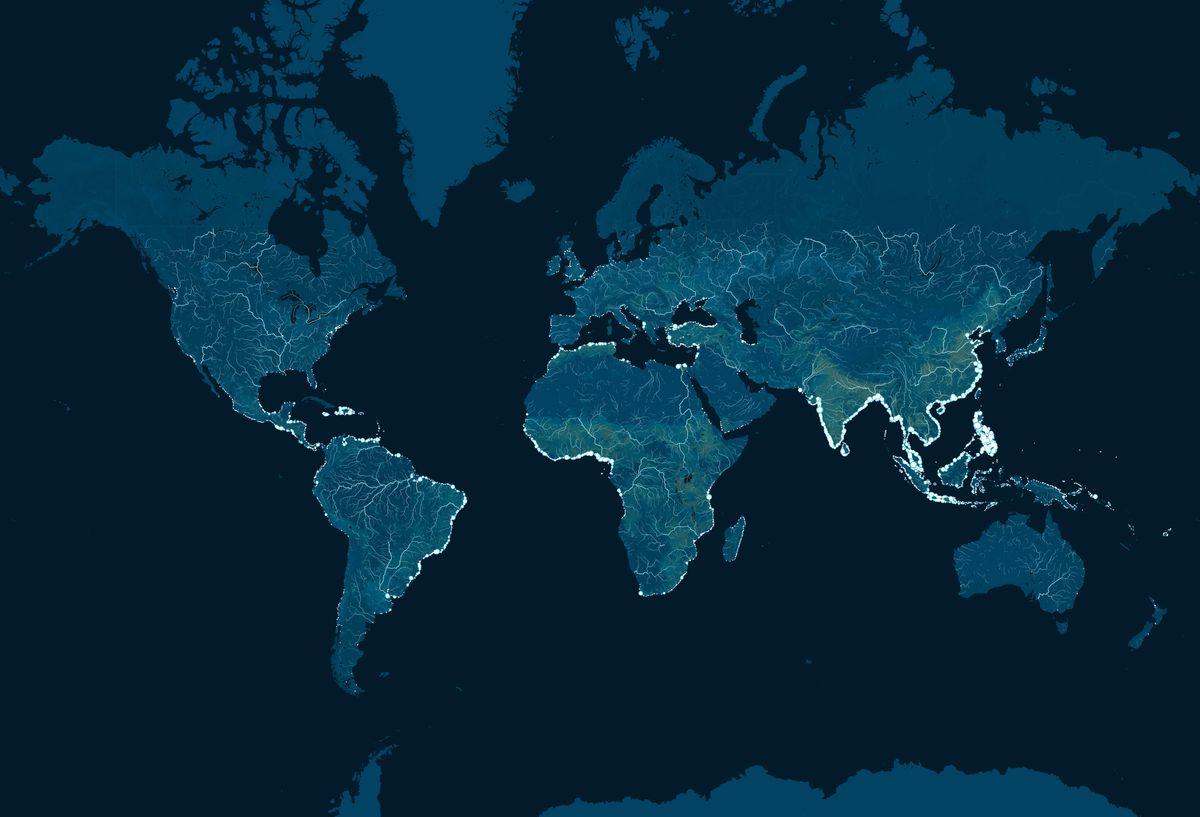
The 1000 top polluting rivers
Join us in tackling 1000 rivers – by helping to spread the message about riverine pollution and supporting our mission.
